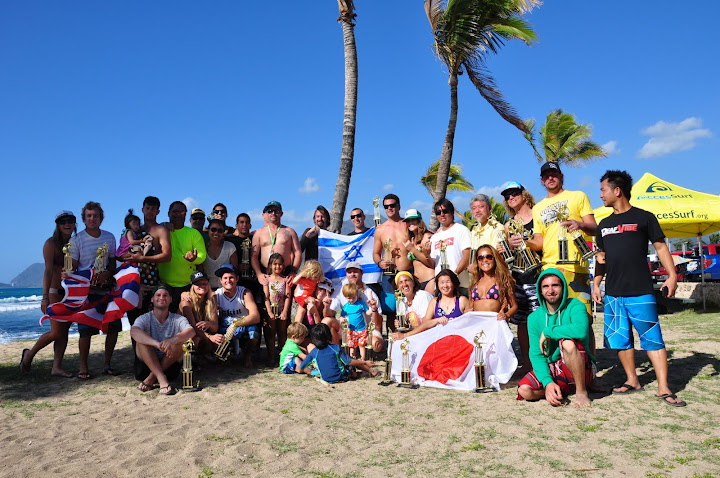World Deaf Surfing Championships
Hawai’i is simply a mecca for people who want to experience a little bit of paradise. With crystal clear sea water averaging 27C all year round, impressive swell, and reliable waves, it is also a haven for surfers, whether they are beginners or the surfing elite. There is no need for the clumsy wetsuits that are required in colder climates; just your board shorts or bikini and you’re ready. There are plenty of surf schools located around the island of Oahu, with Waikiki being a great place to learn in safety. However, if you already have surf experience or just want to see some awesome waves, the North Shore is where you need to head.
About an hour north of Waikiki, head eastwards along the Kamehameha Highway and you will be greeted by dozens of surf breaks with names like Chuns, Jocko’s, Off The Wall, Sunset Beach, and the infamous Banzai Pipeline. The Banzai Pipeline is the site of many surf competitions, such as the Volcom Pipe Pro, where you’ll see the shore line packed with spectators and only the best of the best in the water competing. This is well worth a stop off at any time, but especially in the winter months when the waves are at their biggest and the atmosphere around the coast line is pumping.
Another, but perhaps lesser known, surf event well worth looking out for when visiting Hawaii is the World Deaf Surf Championships. Organised by the International Deaf Surf Riders Association, approximately twenty deaf surfers from around the world took part in this years’ event, which was held in February on the west side of Oahu at a reef break called Maili Point. The categories for the championships included both men’s and ladies longboarding, shortboarding, and body boarding, and also included a senior’s category. The international entrants ranged from Japan to Israel, England to America, and of course some true Hawaiians.

With American and English interpreters on hand to relay instructions throughout the day, several fast paced heats took place. Each surfer was allowed to catch 10 waves per heat, with the two best rides used by the judges to score each surfer. With no time to relax, the heats flowed quickly into the finals. Surfers competing in both categories of masters long and short board were required to use a caddie, who would wait in the water with the next board to be used so a swift changeover could be made. English competitor Harry Hilliar was unaware of this requirement before the championships began, and as attempts to find a caddie failed he resorted to paddling out on his long board with a short board resting on top. Once the board was handed over to a water safety steward, Hilliar took on the challenge of two finals back to back. The competition between the deaf surfers was tense, and as the day came to a close everyone was eager for the results.
This year American Darcy DeLao, Israeli Ido Dar-el, Japanese Tatsuro Ota, and Hawaiian Paul McDonnell all took home 1st place trophies in their categories. Englishman Harry Hilliar managed to pick up the most trophies on the day, collecting four to take home for achieving 2nd place in his finals. The body boarding group was smashed by Kiyo Seminara, leading a trio of talented ladies. This was a great day for the international community of deaf surfers and a very enjoyable event for the spectators, partners, friends, and children who made up the crowd looking on.
The Hawaiian way of life is an easy one to step into; people are friendly and give their time generously, the environment is respected, and great value is placed on just enjoying life. This is easy to do when you are surrounded by blue skies, sparkling oceans, luscious green flora and fauna, and food that will send your senses into overdrive. There is plenty to see and do, even if you are not the biggest surf fan out there, heritage sites, volcanoes, observatories, whales, and sea turtles are just a few from a long list of Hawaiian treasures to be explored.
Travelling on a Cunard cruise offers you the chance to take in Hawaii and it's beautiful scenery in luxury. Click here for more information.
Article by Sophie Macdonald




















